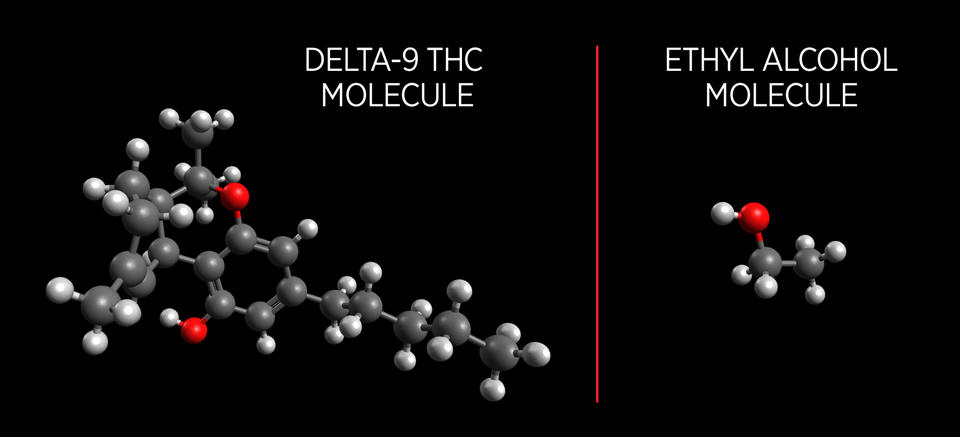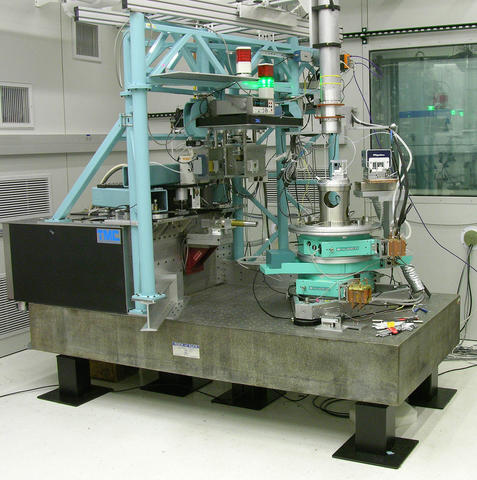Material Matters
The Quarterly Magazine of NIST's Material Measurement Laboratory
Summer 2017
How NIST Reference Materials Affect You
In this issue
- A Message from the MML Director
- Measurements Matter: How NIST Reference Materials Affect You
- NIST Upgrades Widely Used Database of Molecular 'Fingerprints'
- NIST 2017 Mass Spectral Library Unveiled at ASMS in Indianapolis
- Locascio Testifies to Congress on Advanced Materials
- Scientists Lay the Groundwork for a Reliable Marijuana Breathalyzer
- Judges Exchange Black Robes for NIST Lab Coats
- Fentanyl Can Sicken First Responders. Here’s a Possible Solution.
- New NIST Data to Aid Production and Storage of 'Fascinating' Medication
- NIST Researchers Develop a Genotoxicity Assessment Tool for the Great Lakes
- X-rays from Copper Source Set New Gold Standard for Measuring Industrial Materials
- Outreach and Partnering
- Recent Awards
A Message from the MML Director
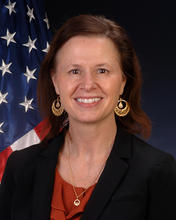
Director
Material Measurement
Laboratory
NIST
For the past five years, it has been an incredible honor to serve as MML Director, and most recently as NIST’s Acting Associate Director for Laboratory Programs. This fall, I will start a new phase in my career, as Vice President for Research at the University of Maryland.
It was a difficult decision to leave a beloved institution where so much of my professional development has been nurtured, and where I have so many close scientific collaborations and personal relationships. Ultimately, my decision to join UMD hinged on the job’s rich opportunities for developing and nurturing new research programs and partnerships. Fortunately, these duties at the University of Maryland will mean frequent interactions with NIST.
My years at NIST have been fulfilling, creative, and full of engaging technical challenges and wonderful friendships. I have loved almost every day in every job that I have worked in at NIST. Even those days that I have found to be most challenging provided me with great opportunity for learning and growing.
I have particularly enjoyed serving as MML Director working with so many people across the Laboratory to foster a culture of openness, inclusiveness, and technical and administrative excellence. We have created a thriving and reinvigorated MML, become a critical player in the Materials Genome Initiative, and launched our own Office of Data and Informatics. We have greatly expanded our portfolio in biomanufacturing and precision medicine, and continued our outstanding work providing critical support for accurate measurements for commodities trading, physical infrastructure, chemical monitoring, and national security. We have built a strong leadership team across MML with a unified innovative strategy.
We have achieved all this in just a few short years because of the dedication of NIST staff to the NIST mission and support of world-class science. Going forward, the MML Strategic Plan will continue to guide our efforts. Our plan is resilient to change, because it continues to be aligned with national priorities.
It has been a pleasure to work with such an amazing staff in MML and at NIST. I am confident that MML will be in good hands going forward, and look forward to seeing it continue to excel in fulfilling its vital mission.
Measurements Matter: How NIST Reference Materials Affect You

In 2012, Consumer Reports announced startling findings—with potentially serious public health ramifications. The publication investigated arsenic levels in apple juice and rice and found levels of the toxin above those allowed in water by the Environmental Protection Agency. The articles pointed out that there were no rules about allowable levels for arsenic in food. The Food and Drug Administration responded by issuing a limit for arsenic levels in apple juice and, in 2016, for infant rice cereal. But the damage was already done.
It’s a funny quirk of human psychology: we take the most important things for granted—until it all goes wrong. You probably don’t often question whether the food you buy in the grocery store is safe. Or if the lab where your doctor sends your samples accurately calculated your vitamin D levels. But imagine, for a moment, how much more difficult it would be to go about your daily life if you didn’t have the information those measurements provide. How would you decide what is safe and healthy to eat? How would you know if you were getting enough vitamin D or if your cholesterol levels were too high? That's one of the big reasons NIST exists—to reduce uncertainty in our measurements and increase your confidence in the information you use to make important decisions in your daily life. And part of the way NIST does that is through Standard Reference Materials (SRMs).
NIST 2017 Mass Spectral Library Unveiled at ASMS in Indianapolis
The NIST Mass Spectrometry Data Center released the 2017 version of the NIST Mass Spectral Library (SRD 1A v17 aka NIST 17) at the American Society for Mass Spectrometry (ASMS) annual meeting, June 4-8, 2017 in Indianapolis, IN. The NIST Mass Spectral Library is the world’s most widely used and trusted MS library. NIST 17 contains nearly a million mass spectra and MS search software for compound & fragment identification. For the 2017 release, the library was enhanced with the addition of more than 30,000 electron ionization (EI) spectra, 418,000 MS/MS spectra (including metabolites, peptides, & lipids), and 16,000 additional compounds to the gas chromatography (GC) Retention Index library. In addition, a powerful new spectral search algorithm allows identification of chemical compounds not present in the library. The MS Data Center unveiled NIST 17 at ASMS to distributors, customers, and users through six oral presentations, 13 poster presentations, a distributor informational session, and the NIST MS Library exhibit booth.
Locascio Testifies to Congress on Advanced Materials
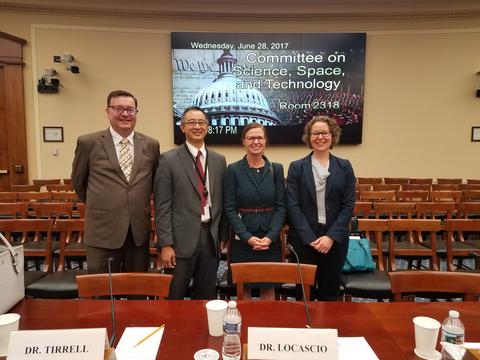
On June 28, 2017, MML director Laurie Locascio testified on “Material Science: Building the Future” before members of the Energy and Research and Technology subcommittees of the House Committee on Science, Space, and Technology. Dr. Locascio talked about NIST’s role in meeting measurement science needs to help advance materials-related industries, with emphasis on the Materials Genome Initiative (MGI). The MGI was launched in 2011 to speed adoption of the “materials by design” approach for the more rapid development of materials with novel properties. Materials scientists using this approach use data and modelling to predict the performance of materials before making them, rather than rely on expensive trial-and-error experiments. NIST supports the MGI with a nation-wide infrastructure for materials property data and founded a center of excellence, the Center for Hierarchical Materials Design, to foster and showcase practical applications of the MGI. Other witnesses at the hearing were Matthew Tirrell of Argonne National Laboratory, Ames Laboratory’s Adam Schwartz, and Fred Higgs of Rice University. The House Committee on Science, Space, and Technology has responsibility for “government activities involving Federal non-military research and development,” which includes, through the Subcommittee on Research and Technology, jurisdiction over NIST. You can view the hearing or read Dr. Locascio’s written testimony.
Judges Exchange Black Robes for NIST Lab Coats
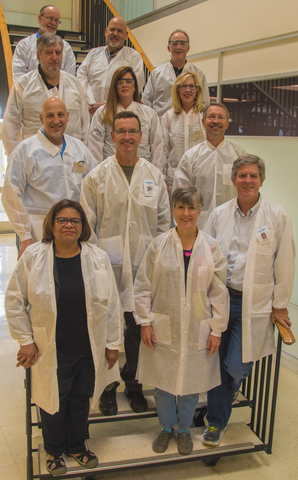
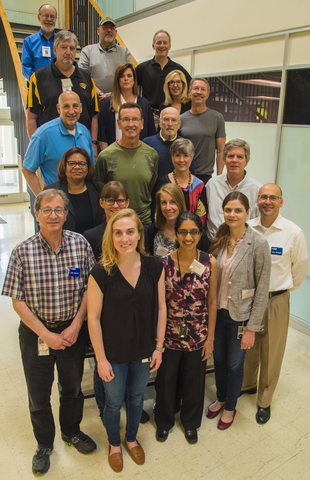
MML’s Applied Chemicals and Materials Division recently provided a short course on Vapor Sampling and Characterization for 13 members of the judiciary on June 8 and 9, 2017, under the auspices of the National Courts and Science Institute (NCSI). NCSI is a nonprofit foundation that provides scientific training to the judiciary, enabling judges to better handle scientific evidence. Judges who complete training are designated Resource Judges, or upon completion of multiple training modules, Fellows of the Institute. These specially trained judges then mentor other judges throughout the judiciary on specific scientific topics. Two state supreme court justices, five state appellate judges and six trial judges participated in the course at NIST-Boulder. The main topic was the NIST-developed technology called PLOT-cryoadsorption, which has both a laboratory and a field portable version. The example application of the technology was vapor characterization for arson fire debris. The judges heard lectures on vapor characterization, chemical analysis, mixture behavior, and measurement uncertainty. Five laboratory sessions featured experiments on all the techniques, in which the judges exchanged their black robes for white lab coats. The capstone lab was called the six-pack: six samples of fire debris (made by burning gasoline, diesel fuel, or no accelerant) were chosen by a dice throw, and the judges had to figure out what, if any, ignitable liquid was used in the fire. Finally, the judges participated in the mock voir dire hearing of an expert witness. Boulder District Attorney Stan Garnett was a special guest playing his usual role of prosecuting counsel, and prominent Boulder environmental lawyer Marcus Martin served as defense counsel. The judges had a great time and came away better equipped to handle scientific evidence. One appellate jurist expressed that he wished he had taken the course before he presided over an arson appeal a few months ago. There are currently 60 more judges on the waiting list for two offerings of the course next May.
New NIST Data to Aid Production and Storage of 'Fascinating' Medication
Amantadine hydrochloride may be the most common medication you’ve never heard of. This compound has been around for decades as the basis for antiviral and other medications, from flu therapy to treatments for brain disorders such as Parkinson's disease and the fatigue associated with multiple sclerosis.
And yet, this compound has long been a bit of an enigma because of missing information on its properties. Now, chemists at the National Institute of Standards and Technology (NIST) and collaborators have published the very first data on this important chemical’s thermodynamic properties, including data on how it responds to heat and changes from a solid into a gas.
Such data are valuable to the chemical and pharmaceutical industries for getting the highest production yields and shelf life for the medication.
“Our research results are not directly related to the medical application of this multifunctional drug, although I am really fascinated by the range of its pharmacological activity,” NIST research chemist Ala Bazyleva said.
“We studied its thermodynamic properties and decomposition,” Bazyleva said. “It is surprising, given the long history of amantadine-based drugs, that there is almost no information like this in the literature for many of them. Chemical engineers often have to
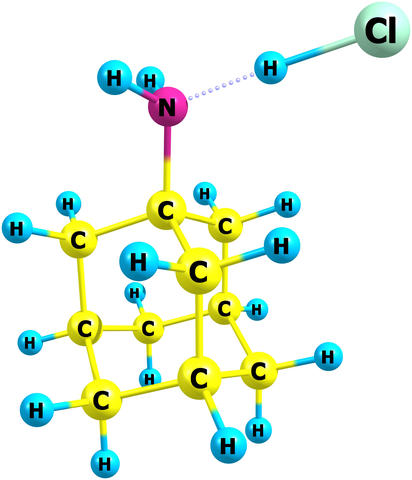
NIST Researchers Develop a Genotoxicity Assessment Tool for the Great Lakes
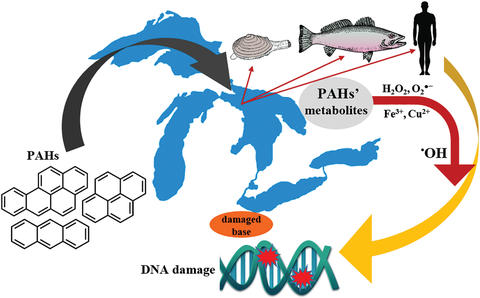
Researchers in MML’s Biomolecular Measurement Division, in collaboration with researchers at the National Ocean and Atmospheric Administration (NOAA; Mussel Watch Program), have recently reported in the journal Environmental Toxicology, a method for evaluating genotoxicity effects, DNA damage, in the soft tissues of zebra mussels found in the Great Lakes. The mussels were obtained from archived samples collected from the harbor of the Ashtabula River in Ohio, where 500,000 cubic yards of sediment contaminated with 25,000 pounds of PCBs, uranium, radium & thorium were removed between 2006 and 2007 as part of the Great Lakes Legacy Act of 2002. NIST researchers measured DNA damage in mussels collected in 2014 from the Ashtabula harbor, where NOAA has confirmed measurement of elevated concentrations of polycyclic aromatic hydrocarbons (PAHs) and polychlorinated biphenyls (PCBs), versus mussels collected from a reference area away from the harbor on the shores of Lake Erie. From this sampling, the extent of DNA damage appeared to be correlated with exposure to pollutants. The reported genotoxicity assessment uses NIST Standard Reference Material 2396 Oxidative DNA Damage Mass Spectrometry Standards. Publication of the assessment protocol, combined with the availability of SRM 2396, enables widespread measurement of genotoxicity effects in species, such as the zebra mussels, to determine the extent of pollutant bioeffects on organisms as well as success of remediation efforts.
P. Jaruga, E. Coskun, K. Kimbrough, A. Jacob, W.E. Johnson, M. Dizdaroglu, Biomarkers of oxidatively induced DNA damage in dreissenid mussels: A genotoxicity assessment tool for the Laurentian Great Lakes, Environmental Toxicology, 2017, https://doi.org/10.1002/tox.22427
Outreach and Partnering
New TRC Consortium Member
The TRC Consortium is excited to announce the newest member of our long-running industrial consortium, D. E. Shaw Research (DESRES). The NIST Thermodynamics Research Center (TRC) Group, within the MML Applied Chemicals and Materials Division, provides industry with high quality thermophysical and thermochemical data for improved design, operation, and innovation in the chemical manufacturing and related industries. DESRES is a privately held biochemistry research company based in New York City that develops technologies for molecular dynamics simulations and applies such simulations to basic scientific research in structural biology and biochemistry, and to the process of computer-aided drug design. By leveraging the unique data resources the TRC Group provides through ThermoData Engine, DESRES will be able to develop and validate the next generation of molecular force fields, making in-silico prediction of drug-biomolecule interactions fast and reliable.
NIST Expands Distribution Channels for Thermophysical Property Data
Knovel Data Analytics has just released a new way for the chemical science community to access the property recommendations of the NIST Thermodynamics Research Center (TRC) Group of MML’s Applied Chemicals and Materials Division. Under a licensing deal between Knovel and NIST, Knovel has just released for limited Beta distribution their visualization technology as applied to the NIST ThermoData Engine (TDE). TDE represents the first implementation of an expert system for thermophysical and thermochemical
property data, combining a database of experimental data, the latest property prediction schemes, and expert heuristics to dynamically provide up-to-date recommendations for the properties of well-defined compounds. Through this agreement, Knovel plans to distribute these NIST data resources to its network of subscribers including academic and industrial libraries. This distribution channel is in addition to others already in place, and strengthens the penetration of NIST data to its broad community of users.
Genome Editing Consortium
Targeted genome editing tools can be used to generate changes at specific sites of the DNA code in living cells. These technologies are being actively pursued by industry, academic, government, and non-profit sectors to advance medicine and bioscience in areas such as regenerative medicine, synthetic biology, novel antimicrobials and antivirals, protein therapeutic biomanufacturing, agriculture, and global food production. Utilizing these technologies for manufacturing and to generate therapies to treat patients will first require robust quantitative assays and measurements to enable high confidence characterization of DNA alterations resulting from genome editing. MML’s Biosystems and Biomaterials Division, with the input of other government, academic, and industry stakeholders, is developing a NIST-led Genome Editing Consortium to assist with meeting these needs. The pressing need for norms and standards in this field was highlighted and summarized in a June 2017 Nature Methods editorial where the journal endorsed the value of NIST assisting the genome editing community and encouraged readers to engage with NIST.
Harnessing Big Materials Data Through the Materials Data Facility
In 2015 the Center for Hierarchical Materials Design (CHiMaD), a NIST Center of Excellence, collaborated with NIST staff to establish the Materials Data Facility (MDF). The MDF accelerates, streamlines, and automates data-driven discovery. The MDF is a suite of cloud-based data services and tools that makes materials data more easily publishable and discoverable, and decreases the barriers inherent to sharing and describing complex and often large materials science datasets. The MDF allows researchers to self-publish datasets while also providing flexible data sharing and search capabilities for these published datasets. In addition to facilitating materials discovery more broadly, these capabilities will specifically help NIST Materials Genome Initiative goals by making datasets generated via CHiMaD, select NIST resources, and other community datasets more discoverable, easier to share, and more accessible. Progress on the MDF was recently presented at the CHiMaD 2017 Annual Review Meeting. To date, the MDF has taken in large data sets with more than 1.5M files and 1.5 terabytes. By volume, MDF has 7.2 terabytes of materials data, across 31 total datasets (with more than 30 more in the pipeline), and has provided data publishing solutions to 94 authors from 14 institutions. MDF has shared 5.3 terabytes of data, facilitating materials data research for thousands of end users. In addition to indexing individual data sets, 16 large data sources have been fully indexed, further facilitating data discovery, and six additional data repositories have been harvested, including around 200 datasets, with more than 1M individual records, and 260 TB of now discoverable data. More information is available in the CHiMaD 2017 Annual Report.
Measuring the Improvement of Novel Electronic Devices
Researchers in MML and NIST’s Physical Measurement Laboratory, in collaboration with Wake Forest and Georgetown Universities, have performed an in-depth study to help elucidate the effect of structural disorder on the evolution of transistor performance. Recent efforts toward developing materials for new types of flexible and biocompatible electronic devices, such as durable displays and implantable bioelectronics, rely on novel materials in which the physical mechanisms are not well understood. In a recent article, the NIST-led team describes an experimental study of incrementally ordered polymers that provides a clear connection between energetic ordering and device ideality by showing the progression from energetically disordered to ideal devices. The science behind formation of ideal devices in these platforms is essential to predicting and creating usable electronics.
E. G. Bittle et al., Dependence of electrical performance on structural organization in polymer field effect transistors, J. Polym. Sci. Part B Polym. Phys., 2017, http://dx.doi.org/10.1002/polb.24358
NIST-FDA Workshop Series
NIST and FDA are actively collaborating on projects that address regulatory and measurement challenges for cell therapies and regenerative medicine products. As a part of this joint effort, NIST and FDA held a highly successful workshop on Sharing Practices in Cell Counting Measurements on April 10, 2017. Workshop presentation slides can be found on the workshop agenda. Building on the success of the Cell Counting Workshop, NIST and FDA are planning a workshop to examine measurement challenges associated with flow cytometry.
Recent Awards
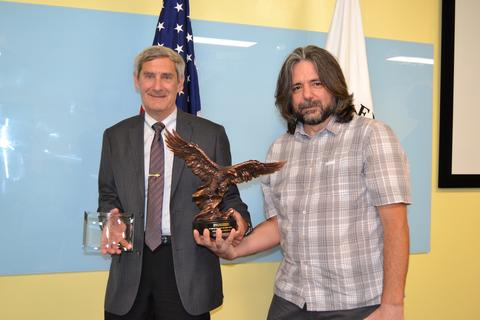
Refrigerants Research Honored with Rocky Mountain Eagle Award
On July 20, Mark McLinden (left) and Andrei Kazakov (right) of MML’s Applied Chemicals and Materials Division were awarded the Colorado Federal Executive Board’s Rocky Mountain Eagle Award for Scientific Achievement. Kazakov and McLinden worked as part of a team from 2011 to 2017 to provide industry with feasible refrigerant options to transition to the next generation of refrigerants. At present, the most common refrigerants are hydrofluorocarbons. Because of their high global warming potential, hydrofluorocarbons are being phased out per the Montreal Protocol, an international treaty which mandates an 85% reduction of HFCs by 2036 which translates to $45B- $99B cost to the U.S. economy. Using artificial intelligence methods, the team identified the performance characteristics of ‘ideal’ refrigerants and carried out a systematic and exhaustive screening of a comprehensive database of molecules — 60 million in total - then winnowed this database down to a set of 27 ‘best’ candidates. The study demonstrated inevitable tradeoffs between efficiency, global warming potential, flammability and toxicity, and presented an optimal set of potential refrigerants, which are critical in facilitating the transition facing the industry.

Cicerone Receives Flemming Award
Marcus Cicerone was recently recognized for outstanding federal service through seminal contributions to the field of label-free chemical imaging, by introducing broadband coherent anti-Stokes Raman scattering (BCARS) microscopy, and to the field of biological therapeutics by introducing the practice of using nanosecond and picosecond dynamics to rapidly and accurately predict long term stability of freeze-dried therapeutic proteins. Cicerone has followed these landmark accomplishments with simplifying adaptations that allow the associated technologies to be used in practical applications; BCARS for label-free chemical mapping of diseased tissues with unprecedented speed, and a bench-top fluorescence method for rapidly evaluating freeze-dried formulations.

Kilpatrick Receives AACC Award
On August 1, 2017, MML staff scientist Eric Kilpatrick was honored with the Outstanding Abstract Award in the Division of Mass Spectrometry and Separation Sciences at the 2017 American Association for Clinical Chemistry Conference in San Diego, CA. Kilpatrick’s abstract was entitled “Characterization of Standard Reference Material 2924 C-reactive Protein Solution.”

Gayle and Cook Receive 2016 JMR Paper of the Year Award

Andrew Gayle (left) and Robert Cook (right) were selected by the Journal of Material Research, a publication of the Materials Research Society, for the 2016 JMR Paper of the Year Award. The paper is entitled “Mapping viscoelastic and plastic properties of polymers and polymer-nanotube composites using instrumented indentation.” The JMR Paper of the Year Award recognizes excellence in advancing materials knowledge through written scholarship. The announcement took place at the 2017 MRS Spring Meeting in Phoenix, Arizona.
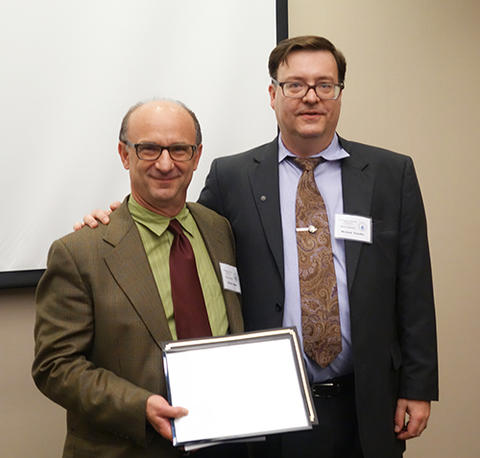
Migler Receives Washington Academy of Sciences Award
On May 11, 2017, the Washington Academy of Sciences presented an award to MML staff scientist Kalman Migler (left) at their annual awards banquet. Migler was recognized for the design and application of innovative optical and rheological experimental techniques to definitively measure and affirm key physical phenomena of polymer fluid flow. The Washington Academy of Sciences was incorporated in 1898 as an affiliation of Washington D.C. area scientific societies.

Lemmon Honored with AGA Achievement Award
On May 1, 2017, Eric Lemmon of MML’s Applied Chemicals and Materials Division was presented with the Achievement Award at the American Gas Association (AGA) conference and exhibition in Orlando. The AGA represents more than 200 local energy companies committed to the safe and reliable delivery of clean natural gas to more than 69 million customers throughout the nation. In early 2000, AGA approached NIST to help AGA revise AGA Report No. 8 which pertains to the thermodynamic properties of natural gas. NIST’s willingness to help set the course for a unique and exemplary partnership between government and the private sector for the benefit of the natural gas industry. It included over 10 years of research and working with national and international experts, such as researchers at the Ruhr University in Germany, the International Standards Organization, AGA’s Transmission Measurement Committee, and various stakeholders associated with the American Petroleum Institute and GPA Midstream Association. The revised AGA 8, which is now two parts, is the result of this extensive effort and hard work. The AGA Achievement Award recognizes an individual whose dedication, significant efforts, and contributions have led to the advancement of the natural gas industry and those that work for this industry.

Wong-Ng Named ICDD Fellow
MML research chemist Winnie Wong-Ng has been named the 2017 Distinguished Fellow for the International Centre for Diffraction (ICDD). ICDD is a non-profit scientific organization as well as a publishing house for the Powder Diffraction File (PDF). The PDF is a versatile database and tool that is used worldwide for materials characterization. This award is for her sustained outstanding contributions to ICDD, to the growth of the PDF, and to the powder diffraction community.
DOE Supercomputing Award
The U.S. Department of Energy (DOE) Advanced Manufacturing Office has awarded a supercomputing allocation of approximately 150 million CPU-hours to a team of chemists and chemical engineers from the American Chemical Society Green Chemistry Institute Chemical Manufacturers Roundtable and MML’s Chemical Informatics Research Group for a proposal titled, “Accelerating the Industrial Application of Energy-Efficient Chemical Separations.” The award was granted through the DOE’s High-Performance Computing for Manufacturing program, which seeks to apply high-performance computing resources within the DOE to specific, high-priority problems identified by American manufacturing companies. In broad terms, these problems include the advancement of innovative clean energy technologies and the reduction of energy and resource consumption. The team’s proposal is based on the chemical manufacturing industry’s reliance on distillation for separating fluids. By itself, distillation accounts for 90% of all separations in the chemical manufacturing industry, and more than 50% of a plant’s energy consumption and capital costs. More significantly, chemical distillation represents approximately 10% of the world’s energy consumption. Although separation processes based upon porous materials (e.g., adsorbents and membranes), collectively referred to as mass separating agents (MSAs), are expected to operate at a small fraction of the energy cost of conventional distillation, a major technical roadblock preventing the widespread adoption of these energy-efficient alternatives is the lack of thermodynamic data. The team’s idea is to fill this fundamental knowledge gap by using state-of-the-art molecular simulation methods and statistical mechanical analysis techniques developed in the Chemical Informatics group and some of the fastest supercomputers in the world. This wealth of data will be made publicly available to scientists and engineers to analyze and hopefully develop new theories of adsorption, which currently remains at an ideal-gas-level of sophistication.



